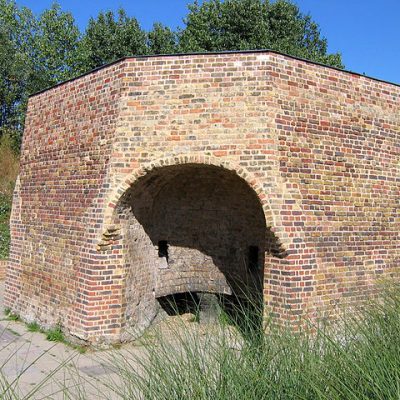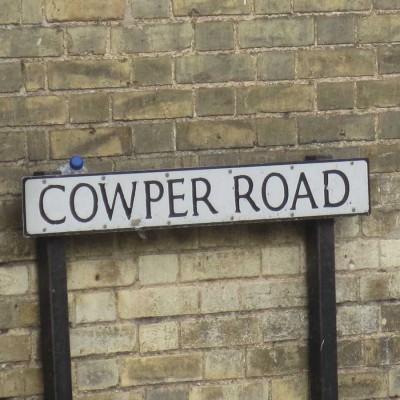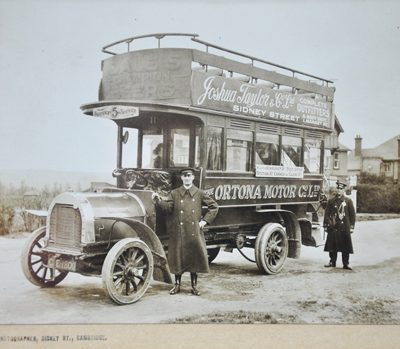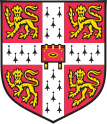Search by topic
- archaeology
- Building of Local Interest
- charity
- church
- crime
- dressmaker
- fire
- Great Eastern Railway
- Listed building
- Mapping Relief
- medieval
- oral history
- poverty
- Public House
- Rattee & Kett
- Religious House
- Roman
- scholar
- school
- Then and Now
- tudor
- women
- work
- world war one
- world war two
Search by text
The Great War in St John’s Parish: Marshall Road
World War One - Marshall Road
No.2 Walter James Foreman, born 1895 in Newmarket, was an assistant in his uncle’s boot making business in Dover in 1911. He served as a private and motor driver in the 34th RAMC motor driver. He requested to be allowed to volunteer from Home Hospital Reserve to serve overseas in RAMC. In Feb 1917 he was punished for irregular conduct – late falling in for a 9.15 am church parade in Blackpool – with 2 days confined to barracks. In 1917 he was sent to Salonika where he contracted malaria.
No. 6 Bernard Victor Walpole, born 1895, was a domestic cook and son of Frederick, a railway clerk. He enlisted 18/6/1915 into the 2nd army, was made a private in the Suffolk Regiment and later moved to the Labour Corps.
No. 8 William Thomas Keys, a joiner b. 1868, and his wife, Henrietta, b. 1873, had six children aged between 17 and 4 at the outbreak of war. However they both volunteered for the Red Cross. He was a private from 1915-1916 with duties at the hospital, on convoys and air raids. She worked at the First Eastern General Hospital from 1917-1918.
No. 20 Poplar House:
Francis Slymown Hawkins, a dairyman, born 1871, was living at 135 Gwydir Street in 1911. He served in the RAMC at the 1st E Gen Hospital (Cherry Hinton & Barnwell). He baptised his daughter on 10/8/19 at St John’s. He was 44 when he enlisted and served from Jul 1915 to Mar 1920.
Harry Stanley was a private in the 1st 5 Battalion (T.F.) North Lancashire Fusiliers. He died from his wounds on 11/9/1917 in Belgium. He may have been wounded during the attack by the 125th Brigade in the Ypres sector on 6th September. His widow Edith received a war gratuity of £6 12s 3d.
No.22 Bodiam:
This is the address of Samuel Albert Brooks Noble who in 1911 had lived with his parents at the Babraham Dairy in Hills Road. He enlisted in the 7th Battalion Queen’s Royal West Surrey Regiment. He was killed in action 28/9/1916 aged 25, He is commemorated on the Thiepval Memorial. At the time of his death he was married to Hilda Emily.
No. 24 Valetta:
Henry John Offley was a corporal in the 12th section attached to the 67th Field Bakery, Army Service Corps. He had joined up in October 1915. On 31/7/16 he was absent from night work section from 8.30 till 9.0 pm when he rejoined section; punishment was administered. In January 1918 he was sent to Mesopotamia; he was discharged in August 1919 with malaria and debility. Assessed as 30% disabled, he was awarded a pension.
Alfred Offley was a drummer with the 2nd Bttn Suffolk Regiment. He was killed 26/08/1914 during the Battle of Le Cateau. 720 men out of 1000 in the battalion were killed wounded or captured. It was a key defence in preventing occupation of Paris. His father Daniel had been a sergeant in the infantry in 1901.
No. 28 Kimberley House:
Thomas Alfred Holmes, born 1899, a boot repairer, became a rifleman in the 16th Bttn King’s Royal Rifle Company. In February 1918 he showed ‘slackness in parade.’ In July 1918, discovered being absent off Royal Engineers working party without permission for 2 hours, he was punished with 8 days Confined to Barracks.
William Barr, a sergeant with the CMGD (Canadian Machine Gun Depot?), married Dorothy Holmes of 28 Marshall Road on 17/7/18 at St John’s.
No. 30 Laurel Cottage There was a newspaper report on 3/8/1917 of a birth of a child to Percy William Odell, C Sgt with the Royal Canadian Garrison Artillery. Percy had been born in Cambridge but in 1918 joined the Canadian Expeditionary Force. At the time he was living in Halifax, Nova Scotia. (dates seem wrong?)
No. 32 Fern Bank:
Harry E Rolfe, 1882, head gardener, was a private from 13.8.1914 in the Grenadier Guards then the Labour Corps. He and his wife Maud Minnie baptized their three children on 12/11/16 at St John’s.
William Joseph Brown was a sergeant in the Machine Gun Corps. He baptized his son 7/11/17 at St John’s.
No. 42 Alfred Joseph Cowell born 1898, a shop assistant, enlisted in the Suffolk Regiment June 1917 and served as a private in C Coy 12th Battalion.
No. 48:
Charles Robert Mascall born 1899, a laundry hand, was mobilized with the Suffolk Regiment in February 1916 but discharged in July 1916. His record states “Not likely to become an efficient soldier.” He had a diseased bone of terminal phalanx non-attributable to his military service.
G Mascall enlisted 14/5/15 in the 2nd army.
No. 52 John Cherry from Crawley, a private with the Royal Defence Corps, married Constance Pratt of 52 Marshall Road at St John’s.
No. 54 Harry Albert Chapman, b 1887, a college servant in 1911, served as corporal (Cook) RAMC at the 1st Eastern Gen. Hospital in Cambridge. On 13/4/19 he baptized his son at St John’s. He was called up in September 1917 and demobbed in December 1919.
No. 60 Henry Charles Beaven, b 1882, a motor bus driver, was a private with the Royal Army Service Corps C(MT). He was posted to the 6 Sig Co RE. He had enlisted in 1913 and was discharged in 1916 having served in France.
No. 59 Pitcombe: William George Haynes, b. 1895, was a grocer’s assistant. He had joined the 1st Bttn Cambridgeshire Regiment in May 1911 and by August 1915 was a sergeant. He then joined officer cadet training in Oxford and was commissioned as a 2nd lieutenant in January 1917 in the 1st/4th Bttn Suffolk Regiment. He was killed 27/6/1917 at Boyelles.
No. 53 Mabel Marguerite Lovesy Barnsdale, b. 1891, was the daughter of George H Barnsdale who, in 1911, was a sculptor and widower. She volunteered for the Red Cross from 1914-1915 and worked as a nurse at the auxiliary hospitals in Cintra Terrace and then Wordsworth Grove, Newnham.
No. 51 Stanley Cecil [Cecil Stanley] Nixon, b 1894, had joined the Suffolk Regiment. There was a newspaper report on 9/8/18 that Nixon had been reported as wounded and missing on 28/3/18 but was now a POW in Germany. There is a letter to his parents saying he is well. He returned home on 17/1/19.
No. 19:
Josiah Smith was a corporal in the ASC(MT). He married on 13/5/18 at St John’s Florence May Smart of 19 Marshall Road.
A C Smart enlisted in the 2nd army on 14/5/15.
No. 15 Charles William Hancock, b. 1876, was a private in the Royal Marines. He was killed in action when HMS Cressy was torpedoed 22/9/1914.
No. 9 Birkdale:
Alfred Charles Marfleet was a private, later 2nd corporal, in the 1/11th Camb Reg and the Royal Engineers. He was posted 5.8.14. Later he contracted trench fever and in April 1918 received a gun shot wound to his left thigh. In November 1918 he contracted flu and was discharged January 1920.
Frank Herbert Marfleet, b 1893 had joined the Royal Navy in 1911 as a waiter on HMS Pembroke. He became a cook on HMS Vengeance and Vivid and married Louisa Symons in Plymouth in 1917.
Leonard George Marfleet was a lance corporal (officer waiter) with the 11th (Cambs) Btn Suffolk Regiment. He received a gun shot wound in the right ankle which fractured his fibia and fibula on 27/10/18 at Cambrai. On 23/4/19 he was discharge as unfit.
Walter John Marfleet was a lance corporal then sergeant in the 3rd Btn Suffolk Regiment, later Highland Light Infantry. He had enlisted on 15/8/14.
No. 5 Mizpah:
Herbert Henry Whittaker, b. 1881, was a private in the Army Ordnance Corps. He had joined at Woolwich 1.9.17 and was posted to the British Expeditionary Force on 2.11.18.
John Ripley Enlisted 4/6/15
No. 1 Belper House: Percy Harold Collinson was lance corporal in the Royal Engineers. He baptized his daughter on 3/8/18 at St John’s. He served in Africa in 1915.
Contribute
Do you have any information about the people or places in this article? If so, then please let us know using the Contact page or by emailing capturingcambridge@
License
This work is licensed under CC BY-NC-SA 4.0











